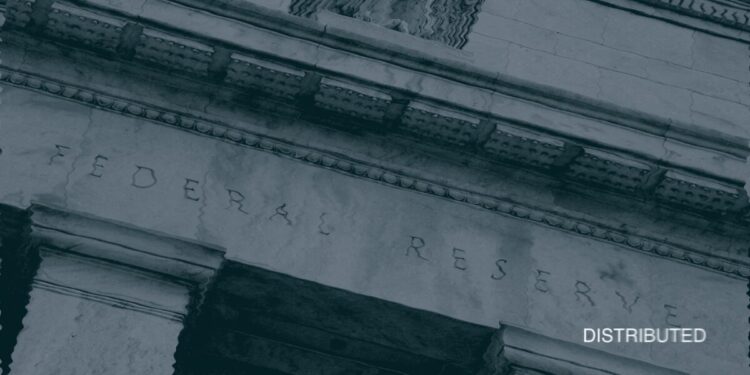U.S. banks have tapped into the Federal Reserve’s emergency lending window, known as the Standing Repo Facility (SRF), as signs of funding strain emerge in the financial system. According to data released by the central bank, banks borrowed $6.5 billion through the SRF on Wednesday, the largest daily borrowing since the height of the COVID-19 pandemic, excluding quarter-end periods.
The move comes as short-term borrowing costs in the repo market have climbed unexpectedly, hinting at tightening liquidity in the system. The repo, or repurchase market, is a vital part of the U.S. financial system where banks, investors, and money market funds borrow and lend cash overnight using U.S. Treasuries as collateral. When rates in this market rise, it can signal that cash is becoming harder to find.
See Related: FTT Tanks 71% After Binance Announced FTX Emergency Acquisition
Short-Term Funding Costs
On Wednesday, the general collateral repo rate which is a key measure of short-term funding costs, jumped to 4.36%, before ending the day at 4.12%. A day earlier, it had peaked at 4.32%, up from 4.20% last Friday. Traders noted that this type of spike is unusual for a regular mid-month period, since repo rates typically rise only at the end of quarters when banks reduce lending activity to manage their balance sheets for regulatory reporting.
Analysts say the increase in borrowing from the Fed and the rise in repo rates suggest that liquidity is tightening gradually. Jan Nevruzi, a U.S. rates strategist at TD Securities, said this was another sign that financial conditions are becoming less flexible. He added that if banks continue to rely on the Fed’s facility, it will be a signal that the central bank needs to pay closer attention to liquidity pressures.
The SRF was created in July 2021 to serve as a safety net for banks, allowing them to access overnight cash loans from the Fed in exchange for U.S. Treasuries or other high-quality securities. It is designed to prevent sudden disruptions in funding markets like those seen in 2019, when repo rates spiked dramatically, and during the 2020 pandemic panic.
Federal Reserve Chair Jerome Powell recently acknowledged that liquidity in the system is tightening. Speaking at a business economics conference in Philadelphia, he said that repo rates have been firming up and that temporary funding pressures have started to appear on certain days. Powell also hinted that the Fed’s program of quantitative tightening, its ongoing effort to shrink the size of its balance sheet may be nearing its end. He suggested that the central bank could announce a formal conclusion to the program as early as its October meeting.
U.S. Treasury Debt Settlements
Another factor contributing to the current cash squeeze is the large volume of U.S. Treasury debt settlements this week. On Wednesday, $40 billion in Treasury bills and bonds came due for payment, followed by another $23 billion on Thursday. When these securities are settled, banks, dealers, and money market funds must transfer cash to the U.S. Treasury. This money moves out of the private financial system and into the Treasury’s account at the Fed, temporarily reducing the amount of cash available in the market.
The Treasury has been issuing record amounts of short-term debt in recent weeks as part of its strategy to manage borrowing costs and ease pressure on long-term yields. However, each new round of issuance can create short-term funding stress as participants scramble to make payments, tightening cash conditions across the financial system.
The current situation may not be seen as alarming, however, analysts warn that sustained reliance on the Fed’s repo facility could point to deeper funding challenges ahead. For now, the increase in repo rates and the rising use of the SRF serve as reminders that even with strong economic data, liquidity in the U.S. financial system is slowly but steadily tightening.



